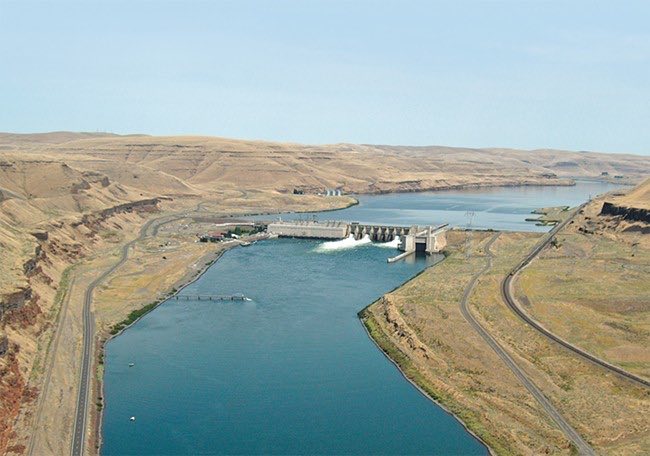forum
library
tutorial
contact

Judge's Order to Save
Salmon is Good Start
by Glen Spain, Kevin Lewis, Brett VandenHeuvel and Joseph Bogaard
Union Bulletin, November 6, 2018
|
the film forum library tutorial contact |

|
Judge's Order to Save
by Glen Spain, Kevin Lewis, Brett VandenHeuvel and Joseph Bogaard
|
 The Oct. 19 Union-Bulletin editorial criticizing a court decision ordering the U.S. Environmental Protection Agency to protect salmon got one thing right: "A plan alone does zip."
The Oct. 19 Union-Bulletin editorial criticizing a court decision ordering the U.S. Environmental Protection Agency to protect salmon got one thing right: "A plan alone does zip."
But a plan is a smart place to start to address the water temperature crisis threatening our salmon and steelhead.
The rest of the editorial was, unfortunately, further from the mark. Removing the four Lower Snake River dams is a critical step to restore struggling salmon runs. And computer modeling developed by the EPA shows that removing the lower four Lower Snake River dams could solve the hot water crisis in the lower Snake -- even in very hot years.
Removing the four Lower Snake River dams would not, as the editorial falsely claimed, "cut off irrigation in the Columbia Basin." The lower four Snake dams are run-of-the-river reservoirs; removing them would not change the amount of water available for irrigation.
The Lower Snake River dams only make about 4 percent of the Northwest's electricity, and our region already produces more power than we use. What's more, regional power planning models show that we could replace the Lower Snake dams' electricity without burning fossil fuels or breaking the bank -- while improving the reliability of our electrical grid.
Furthermore, the link between Southern Resident orcas and Columbia Basin salmon is deeply rooted in science. Washington state's Department of Fish and Wildlife reported that seven of the highest-priority Chinook salmon stocks for Southern Resident orcas come from the Columbia Basin. And six of the world's top Southern Resident orca scientists recently explained that the orcas feed on Columbia Basin salmon during a critical time of the year: Just before giving birth. Because the Snake River offers the best potential for large-scale Chinook salmon recovery, the scientists conclude that, without breaching the Lower Snake River dams, "Southern Resident orca survival and recovery may be impossible."
The editorial implies that we can have healthy salmon runs and keep the Lower Snake River dams. History has not borne that out, and we don't need these four dams.
Instead of pretending that solutions don't exist, let's make a plan and get to work restoring Snake River salmon and steelhead -- along with the jobs, wildlife, and cultures they support.
Judge's Order to Save Salmon is Good Start
Union Bulletin, November 6, 2018
learn more on topics covered in the film
see the video
read the script
learn the songs
discussion forum
